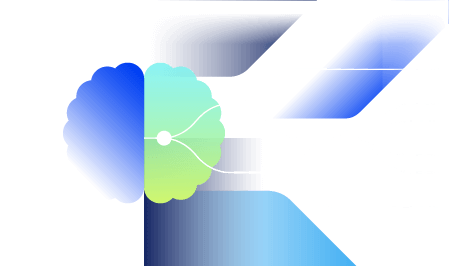What are embeddings in machine learning?
What are Embeddings in Machine Learning?
Embeddings in machine learning are a powerful technique for transforming discrete, often high-dimensional data, such as individual words, product categories, or even distinct users and items, into dense, continuous vector representations within a more manageable, lower-dimensional space.
Trying to feed raw text directly into a mathematical model; well, it simply wouldn't work. Embeddings provide a crucial bridge. They act like a sophisticated "lookup table" or dictionary where each unique item is assigned a unique list of real numbers, forming its vector.

The true magic of embeddings within the field of AI lies in the fact that these representations are not arbitrary; they are learned from the data itself during the training process of a model. This process is designed to capture the underlying semantic links or inherent characteristics of the items.
Consequently, items that are contextually or semantically similar in the original dataset will be mapped to vectors that are close to each other in this newly created space. For instance, words like "king" and "queen" might end up with similar representations, reflecting their related meanings.
Why Do We Need Embeddings?
Machine learning often struggle to directly interpret raw, discrete data such as individual words or product categories.
Trying to feed such data into a mathematical model in its original form doesn’t work, as models require numerical input. This is where embeddings become essential. They provide a crucial bridge, acting like a sophisticated "lookup table" that translates each unique item into a list of real numbers—its vector representation—making the data digestible for algorithms.
The true power and necessity of embeddings, however, stem from how these vectors are created. They aren't just arbitrary assignments; these vector representations are learned from the data itself during a model's training.
This learning is specifically designed to capture the underlying semantic relationships or inherent characteristics of the items, assisting the MLOps steps.
Benefits of embeddings in machine learning
Embeddings offer significant and multifaceted advantages in machine learning algorithms, fundamentally transforming how models can interpret, learn from, and utilize complex, often high-dimensional, data.
Enhanced Semantic Understanding
Embeddings excel at capturing the underlying meaning, context, and nuanced relationships between discrete items, such as words, products, or even users. By representing semantically similar items with vectors that are geographically close to each other in the learned embedding space, these gain a much deeper comprehension of the data.
For instance, an embedding can help it understand that "king" and "queen" share a royal context and are related to "monarch," while being distinct from "peasant."
This goes beyond surface-level similarities; the geometric relationships in the embedding space (like vector offsets) can even capture analogies, such as "king - man + woman = queen." This sophisticated understanding of semantics is invaluable for tasks like translation (preserving meaning across languages), sentiment analysis (detecting subtle emotional tones), and building intelligent recommendation systems that can suggest truly relevant items.
Improved Efficiency and Performance
Traditional methods for representing discrete data often create extremely high-dimensional and sparse vectors (mostly zeros with a single one).
As the number of unique items grows, so does this dimensionality, leading to the "curse of dimensionality"—where data becomes too sparse, models become computationally expensive to train, require vast amounts of memory, and struggle to generalize well.
Embeddings provide a direct solution by offering dense, lower-dimensional representations. This compactness significantly reduces the computational load, allowing models to train faster and require less storage.
More importantly, these dense vectors, by capturing essential information, help identify relevant patterns more effectively, leading to improved generalization on unseen data and ultimately achieving higher accuracy and better overall performance on downstream tasks.
Effective Handling of Categorical Data
Machine learning pipeline models often encounter categorical data, which can range from a few distinct classes to thousands or even millions (high-cardinality features like user IDs or product SKUs).
Representing such data numerically in a way that models can effectively use is a challenge. Simple integer encoding imposes an artificial ordinal relationship, while one-hot encoding becomes unwieldy with many categories.
Embeddings offer a far more sophisticated approach by learning a unique vector representation for each category.
This process not only converts categories into a usable numerical format but also positions categories with similar impacts or behaviors closer in the embedding space, thereby uncovering latent features and relationships within the categorical data itself. This allows the model to leverage these learned similarities, leading to more robust and insightful predictions.
Knowledge Transfer with Pre-trained Embeddings
One of the most powerful practical advantages of embeddings is the capability for knowledge transfer using pre-trained models.
Researchers and organizations invest heavily in training embeddings on massive datasets – for example, word embeddings such as Word2Vec, GloVe, or those derived from large language models (LLMs) are trained on terabytes of text data, while e-commerce giants might train item embeddings on billions of user interactions. These pre-trained embeddings capture a vast amount of general knowledge about language structure or item relationships.
Developers can then take these readily available embeddings and incorporate them into their own models, even if their specific task has limited training data. This practice, known as transfer learning, can significantly accelerate development, provide strong performance baselines, and allow for the creation of powerful tools without the need for extensive computational resources or vast proprietary datasets from scratch.
How embedding works
Understanding what embeddings are and why they're beneficial is one thing; grasping how they actually come into existence and function is key to appreciating their power.
This section delves into the mechanics behind embeddings, explaining how discrete pieces of information are transformed into rich, numerical vectors that machine learning models can effectively utilize. We'll explore the process that imbues these vectors with meaning and allows them to capture complex links within data.
Mapping to Vectors: The Basic Concept
At its heart, an embedding works by creating a mapping from a discrete set of items (like words, product IDs, or user profiles) to a list of real numbers, known as a vector. Each unique item in your vocabulary or set is assigned its own unique vector. Initially, these vector values might be random or initialized according to some simple strategy.
The crucial part is that these are not static; they are parameters that the machine model will learn and adjust during the process.
The dimensionality of these (i.e., how many numbers are in each list) is a hyperparameter that you choose – it's typically much smaller than the total number of unique items but large enough to capture complex links.
Learning Through Neural Networks
The most common way embeddings are learned is through neural networks. Often, a dedicated embedding layer is the first layer in a network that processes categorical or textual input.
When an item (e.g., a word represented by an integer index) is fed into this layer, the layer simply looks up its corresponding vector in an internal "embedding matrix" (where rows are item indices and columns are the vector dimensions). This vector then becomes the input for subsequent layers in the network.
During the network's training phase, as the it works to minimize its prediction error on a given task, the error signals are backpropagated through the network, and the values within the embedding vectors themselves are updated alongside other model weights.
The Role of the Objective Function
Embeddings don't learn meaningful representations in a vacuum. They are trained as part of a larger model designed to achieve a specific goal, defined by an objective function (or loss function). For example:
- In natural language processing, word embeddings (like Word2Vec or GloVe) are often learned by training it to predict a word given its surrounding context words (or vice-versa). The model adjusts the word vectors to become better at this prediction task.
- In recommendation systems, item or user embeddings might be learned by training a model to predict user ratings for items or whether a user will interact with an item.
- In classification tasks with categorical inputs, a common supervised learning problem, embeddings are learned to help better discriminate between the different classes based on labeled examples.
The embeddings are optimized to contain the information most relevant to achieving the objective.
The Result: A Meaningful Vector Space
Through this training process, driven by the objective function, the embedding layer learns to arrange the vectors in the embedding space such that items that are semantically similar or behave similarly in the context of the task are positioned closer to each other.
Dissimilar items will be further apart. This geometric relationship in the vector space is what makes embeddings so powerful. It means the vectors aren't just random numbers; they encode learned links and features of the original items, enabling the model to generalize, make nuanced predictions, and even uncover hidden patterns in the data.
What are embedding models?
An embedding model is a machine learning model specifically designed to learn and generate meaningful vector representations of discrete or high-dimensional data.
While many complex machine systems might use an embedding layer as part of their architecture, an "embedding model" specifically refers to the system or process focused on producing these meaningful, dense vector representations.
These take raw data, such as words, sentences, images, or user/item identifiers, and transform them into a lower-dimensional space where semantic links are encoded in the geometry of the vectors.
The output—the embeddings themselves—can then be used directly for tasks like similarity search, visualization, or as feature inputs for other downstream machine models
The process of creating these embeddings typically involves training a neural network on a specific, often self-supervised, task.
For instance, a word embedding model might be trained to predict a target word based on its surrounding context words (or vice versa). As the model learns to perform this task accurately, the weights within its embedding layer are adjusted, effectively becoming the learned embedding.
Our machine learning solutions
Explore OVHcloud's innovative solutions designed to power your ambitions in the AI and ML space. Discover how our cutting-edge services can help you build, deploy, and scale your projects in the cloud:


